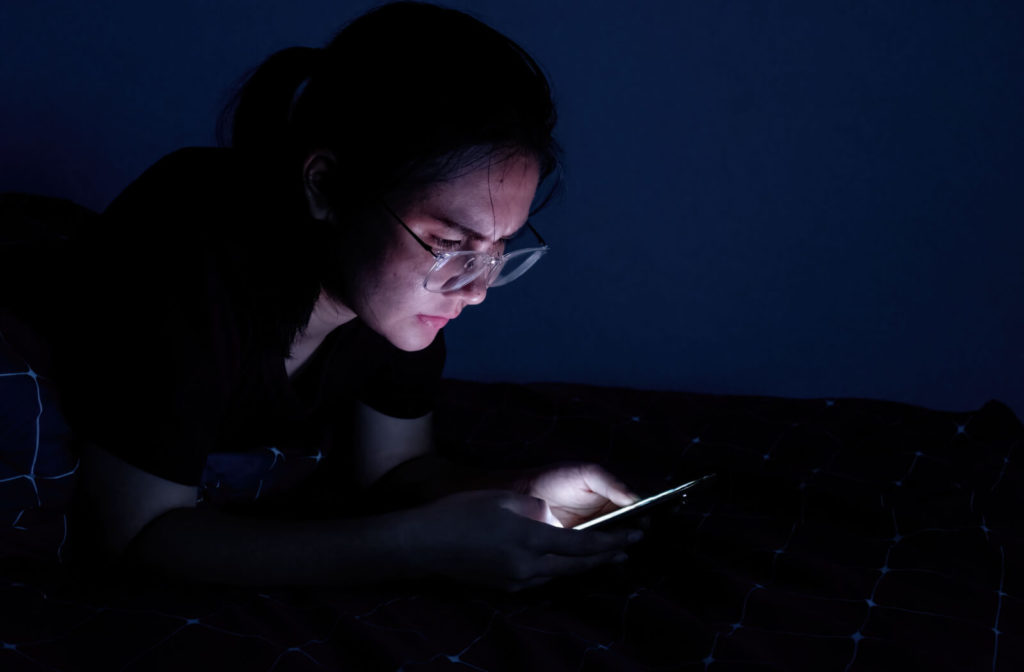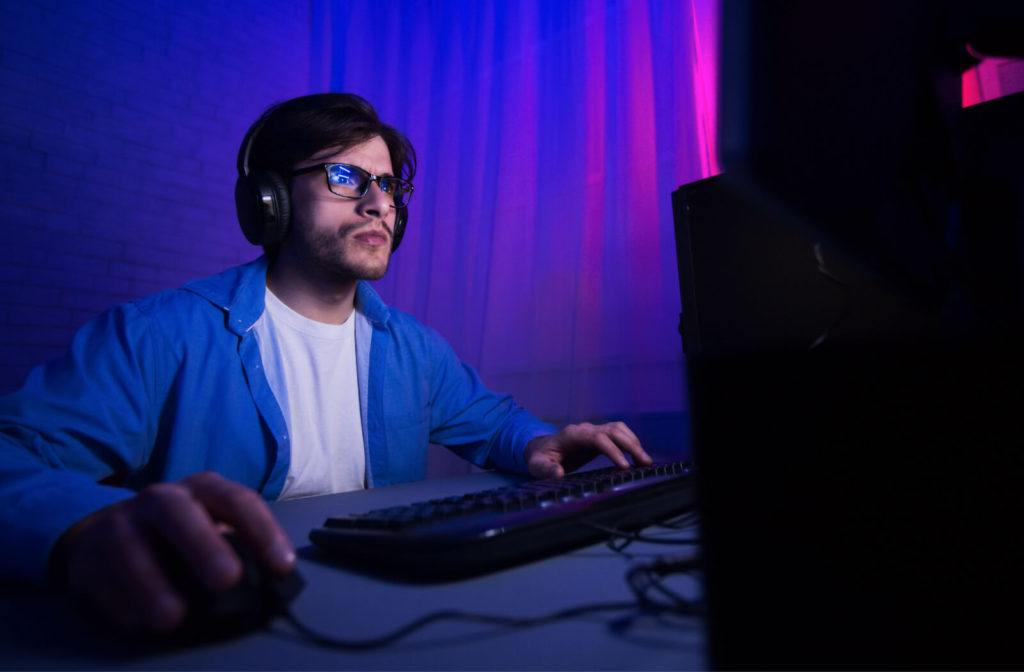Blue light glasses have been gaining popularity in the last few years and claim to play a role in minimizing the effect blue light may have on your eyes. Currently, the effectiveness of these glasses has yet to be proven, but some believe they may help protect against eye strain caused by digital devices.
Some studies, although limited, have spoken of some benefits that can come from wearing blue light glasses. You can wear blue light glasses when looking at a screen, monitor, or other activity that may lead to your eyes encountering blue light.
If you’re experiencing discomfort in your eyes, an eye care specialist can provide tips and advice on improving your vision and eye health.
When to Wear Blue Light Glasses
You can wear blue light glasses most of the day, and many glasses or sunglasses can even have a special coating added to your pre-existing lenses. Here are a few everyday activities that you may consider putting on your blue light glasses for:
Laptop & Computers
If you are constantly using a laptop or computer and looking at a monitor, it may be a good time to wear your blue light glasses. Many employees spend a large portion of their day looking at a screen, and this kind of overexposure can lead to digital eye strain.
Smartphones & Tablets
A study by the Pew Research Center determined that 97% of Americans own a cellphone, and 85% are smartphones. People constantly check their phones to surf the web, send messages, or scroll on social media platforms. Our eyes are continually exposed to the blue light emitted from these devices, which may negatively affect our ocular health.
Outside in the Sun
Besides artificial sources of blue light, like smartphones and tablets, the sun is the most significant source of blue light. It’s hard to avoid the sun when commuting to work, walking outdoors, and going through your daily life. Wearing sunglasses with a blue light coating can help reduce any potential harm caused by overexposure.

What Is Blue Light?
Blue light is electromagnetic energy estimated to make up one-third of all visible light. It can be found everywhere and travels in waves that can pass around or even through us. Sunlight is the largest contributor to blue light, but it can also be found in artificial LED lights. We are more exposed to blue lights than ever with the massive rise of technology. Our TVs, phones, tablets, and laptops all produce high amounts of blue light.
Is Blue Light Harmful?
Some claims state that overexposure to blue light can lead to harmful side effects, such as retinal cell damage, including age-related macular degeneration and other vision problems. Dry eye and digital eye strain are other common conditions resulting from overexposure to blue light and too much time looking at a screen.
What Are Blue Light Glasses?
Blue light glasses are a proposed solution to some issues resulting from overexposure to blue light. These glasses have a special coating intended to deflect some of the glare from blue light and minimize the strain on your eyes.
What Is Digital Eye Strain?
The AOA describes digital eye strain as a group of vision-related issues that can come into play when looking at a screen or monitor for prolonged periods. Some of the symptoms of digital eye strain include the following:
- Eye strain
- Dry eyes
- Blurred vision
- Neck and shoulder pain
- Headaches
If you’re experiencing any of the above symptoms, consider booking an appointment with an eye care specialist to discuss your ocular health.
Tips for Dealing with Digital Eye Strain
The efficiency of blue light glasses is still under examination, but there are some simple steps you can take to try and prevent digital eye strain and the discomfort it presents.
Wear Light Sensitivity Glasses
Some people can wear light sensitivity glasses with an FL-41 Tint to help reduce the effect of light on their eyes. They can be a great option for people prone to light-triggered seizures, migraines, and several other conditions.
Use Artificial Tears
Artificial tears or eye drops can be used to help lubricate the eyes and provide moisture. You can select between preservative and preservative-free eye drops. Eye drops with preservatives can help to combat bacteria growth but can lead to discomfort for some people. Preservative-free eye drops can be used more frequently and are less likely to result in irritation.
Take Frequent Breaks
Your eyes need time to rest. Try to take frequent breaks when you’re spending lots of time looking at a screen or doing other activities that might require a high level of concentration. A good rule of thumb to follow is the 20-20-20 rule: after 20 minutes of screen time, take a 20-second break to look at something roughly 20 feet away.
How We Can Help
Digital eye strain can lead to more serious vision-related problems; any recurrent symptoms shouldn’t be ignored. If you’re concerned about your ocular health, book an appointment with Dr. Taylor Bladh OD for an exam. Our team can help you determine if blue light glasses or other treatment options are the right fit for you.



